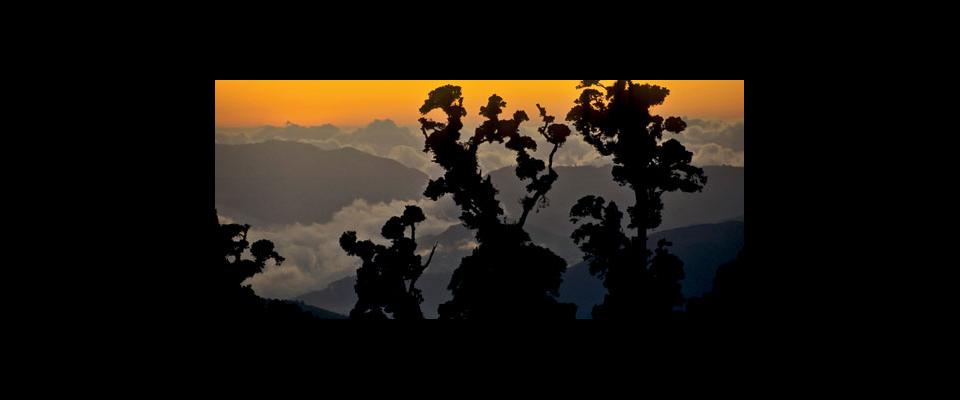Researchers find fog brings more than just moisture—it brings fertilizer, too.
It’s morning in big basin State Park, Santa Cruz County, about an hour after sunrise. Ten miles away, on the Pacific Coast Highway, drivers alternate high beams and low beams, trying to see more than 20 feet ahead of them in the thick fog. Deep in the redwood forest, it’s dark, silent and damp. One quiet hiker listens to the drip of water on leaves.
Today that hiker is Professor Todd Dawson, visiting one of his research plots in the park. Dawson is a botanist with the Integrative Biology Department and he is looking for redwood fertilizer—but as he walks through the forest he’s not looking down at the ground, he’s looking up.
In the plant world, nitrogen is a rare and precious commodity. The air we breathe is mostly nitrogen, but very few living things can use it. California strawberry growers spend millions to inject nitrogen into coastal soils through artificial fertilizers. Yet giant redwood forests nearby seem to grow on just the bare minimum.
“‘Where does that nitrogen come from?’ then becomes the question,” Dawson says. “In this case, we find that a significant amount of it is definitely coming through fog. And that’s a new twist in the story.”
Dawson and his students discovered that Pacific fog is dripping with usable nitrogen. California fog forms over cold ocean water and is blown onto land. Tiny bacteria on the surface of the ocean capture nitrogen the same way microbes do on a peanut plant, which farmers use to recharge the soil. The bacteria pull out the nitrogen, inject it into the water that becomes fog, and the trees absorb it through their leaves.
“What it means is that the ocean is feeding the forest, so to speak,” he says.
A few years ago, Dawson helped show that fog is a crucial source of water to redwood forests. Now, early results show that a third of the nitrogen passing through the coastal system comes from the fog. And it’s not just nitrogen. He has found other important nutrients such as potassium and phosphorus in fog as well.
The discovery has wide implications for fog ecosystems around the world, such as the cloud forests of Central America. In ultra-arid places such as Chile’s Atacama Desert (where it rains perhaps once in 50 years), most of the nutrients may come from fog.
Dawson says now that he’s measured the nitrogen, he wants to know how the forests will be affected when stripped of their fog by global warming.
“What happens if our land use or our climate ends up changing?” he asks. “How will that influence the water and the nitrogen inputs? And then in turn how will that affect the forest?”
From the March April 2007 Centennial Edition issue of California.



















